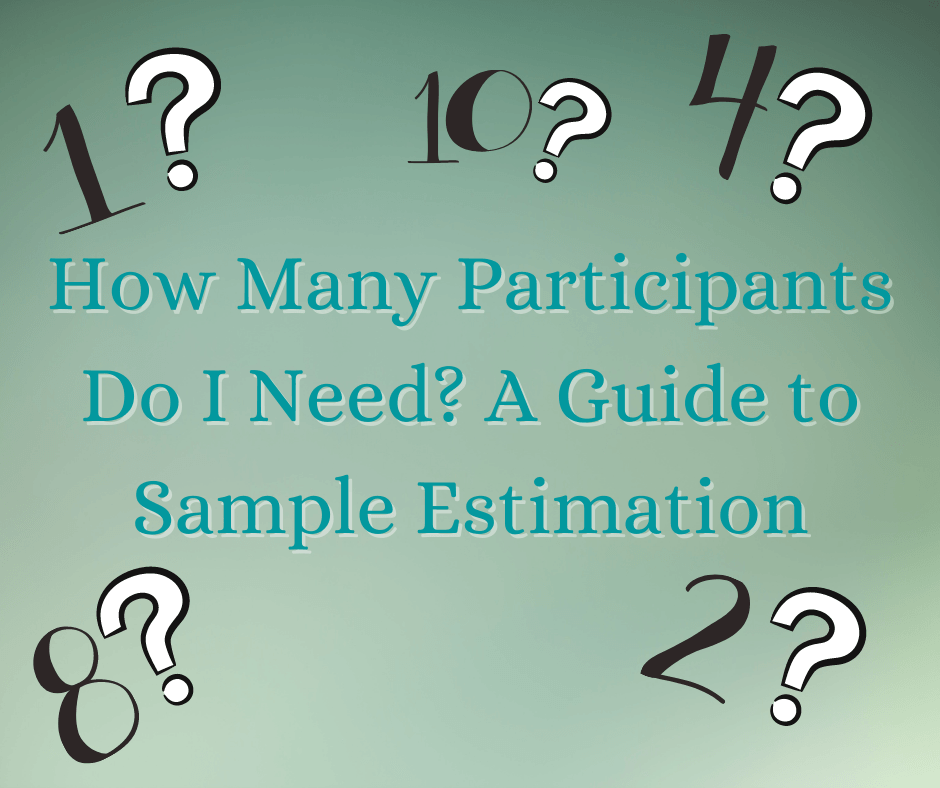How Many Participants Do I Need? A Guide to Sample Estimation

As a qualitative mentor, a question I am frequently asked is, “How do I select the right sample size?”. There is no short answer or hard and fast rule for this. As with all things, there is nuance here, and much of this depends on other factors of your study. The purpose of this blog post is to provide you with strategies to select the appropriate sample for your qualitative study.
When students ask me what their sample needs to be, my first response is to look at the literature. In your literature review, you reviewed studies with methodologies similar to yours. Look at what others who have conducted studies like your own have used as samples. Start to model yours on these estimates. This will provide you with a good start to estimate your sample size.
The key to finding the right number of participants to recruit is to estimate the point at which you will reach data saturation, or when you are not gleaning new information as you add participants. Practically speaking, this means that you are not creating new codes or modifying your codebook anymore. Guest et al. (2006) found that in homogeneous studies using purposeful sampling, like many qualitative studies, 12 interviews should be sufficient to achieve data saturation.
However, there are qualifications here, including specifics of a data set as well as a researcher’s experience or tendency to lump or split categories. More recently, Hagaman and Wutich (2017) explored how many interviews were needed to identify metathemes, or those overarching themes, in qualitative research. In contrast to Guest’s (2006) work, and in a very different study, Hagaman and Wutich (2017) found that a larger sample of between 20-40 interviews was necessary to detect those metathemes.
You can see that between these two articles, there is variation in sample size and the number of participants necessary to reach data saturation. These should, however, provide some guidance and a starting point for thinking about your own sample. At a minimum, you probably want to begin with a sample of 12-15 participants. Plan to add more as needed if you do not believe you have reached saturation in that amount.
References
Guest, G., Bunce, A., & Johnson, L. (2006). How many interviews are enough?: An experiment with data saturation and variability. Field Methods, 18(1), 59.82. https://doi.org/10.1177/1525822X05279903
Hagaman, A. K., & Wutich, A. (2017). How many interviews are enough to identify metathemes in multisited and cross-cultural research? Another perspective on Guest, Bunce, and Johnson’s (2006) landmark study. Field Methods, 29(1), 23-41. https://doi.org/10.1177/1525822X16640447

We work with graduate students every day and know what it takes to get your research approved.
- Address committee feedback
- Roadmap to completion
- Understand your needs and timeframe